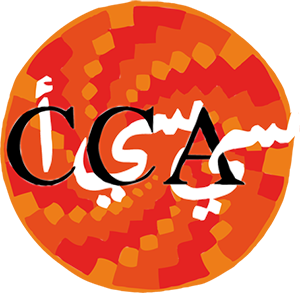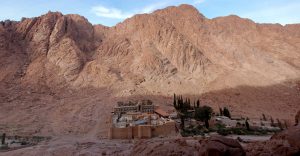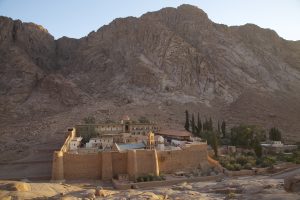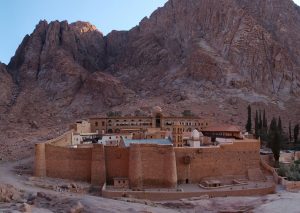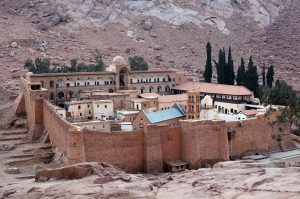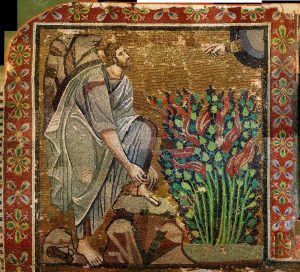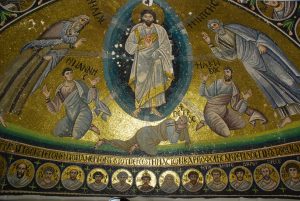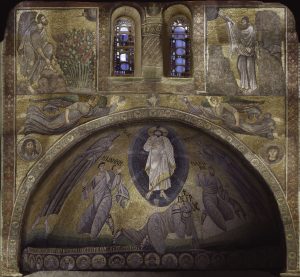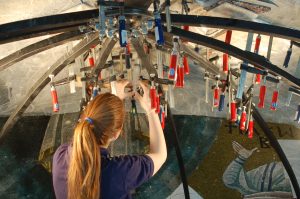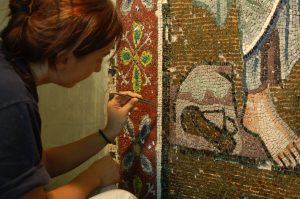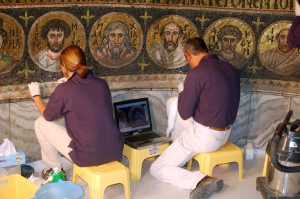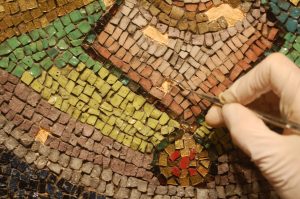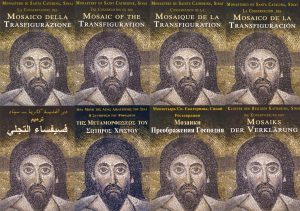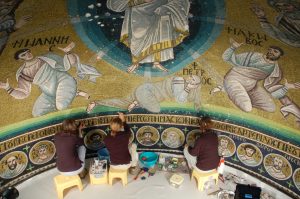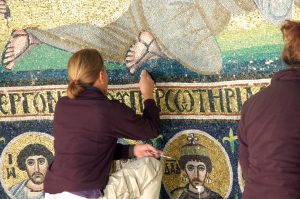Past restorations – St. Catherine
Two conservation interventions attempted in the past to deal with the static problems of the mosaic of the Transfiguration. Both were providential and certainly contributed to its survival. The first goes back to 1847, and was the work of a Russian monk by the name of Samuel.
His concern was to fasten the mosaic to the wall in the same critical points that were identified during the current treatment, thus demonstrating that the problems were already there in the 1800s and that most of the tesserae had already fallen.
Following the restoration techniques used at the time, he inserted nails and iron rods in the entire area depicting Christ, in the scene of the Tablets, and in the area directly beneath the bifora, on the right-hand angel, to anchor the detached portions of mosaic to the wall.
Moreover, the monk carried out a meticulous work of integrating with a painted plaster stucco the thousands of tesserae that had been lost over the centuries, both to fill in empty spaces and to fix the tesserae that were about to fall.
The second treatment goes back to 1959, when an American expedition supported by Princeton and Michigan Universities traveled to this remote place of prayer to study and photograph the works. The diary of this expedition was published in National Geographic 125 (1964), with George H. Forsyth and Kurt Weitzmann recounting the significant phases of the mission.
During this treatment, the area of the Christ figure was consolidated. The rods from 1847 were removed and replaced with copper pins, inserted through lacunae (gaps) in places that were well attached to the wall. The idea was to create safe points in the mosaic with infiltrations of a mix of plaster and casein in the zones of greatest detachment from the wall.
At the end of the mission, the American team made an appeal for further in-depth conservation to proceed urgently and resolve the basic problem of the mosaic’s detachment, which they had attempted to remedy in a brief time, with notable success.
Fifty years have passed since that appeal, and finally a conservation program has been implemented in order to solve the problems left open.
